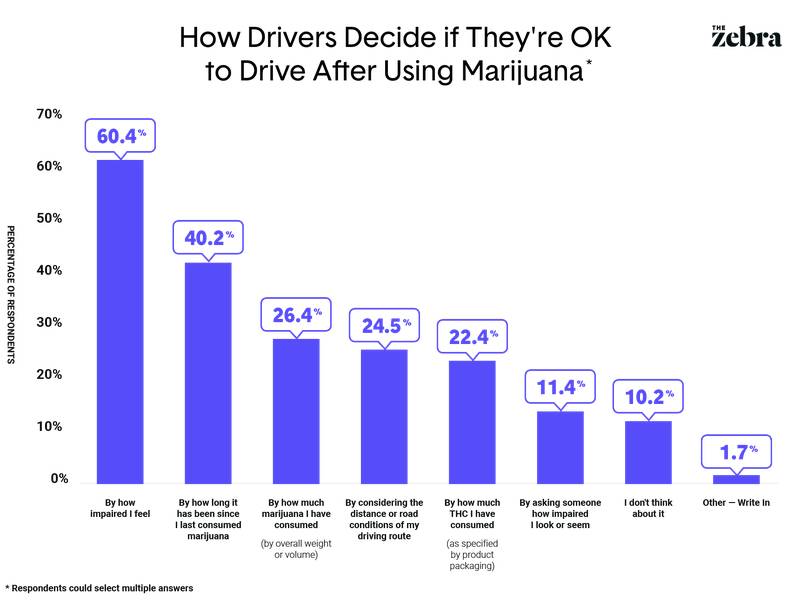Intro
More drivers than ever are grappling with decisions about when it is — and isn’t — OK to drive after consuming marijuana, which is now legal for adults to use recreationally in 10 states and Washington, D.C.
Laws and best practices for drivers who drink alcohol have been established by decades of science, but research on the effects of marijuana on driving is far more limited.
Here’s what we know:
- Marijuana causes impairment. Studies show that marijuana can impair motor skills, cognitive function, and other driving abilities. If you’re impaired or are unsure if you’re impaired, experts agree you should not drive.
- It’s unclear how long impairment lasts. Research is underway to establish how long drivers should wait to drive after consuming marijuana, but current recommendations range anywhere from 2 to 24 hours, depending on who you ask. Washington’s Liquor and Cannabis Board recommends at least 5 hours for inhaled marijuana (or longer if it’s an edible). Blood tests can show if someone has used marijuana, but not how impaired a driver is. Regular users can test positive for THC for days after their last use, even though impairment likely lasts just hours.
- Marijuana’s contribution to car crashes and traffic fatalities is unclear. Marijuana’s role in car crashes isn’t as clear as the link between alcohol and crashes, according to IIHS, which found early evidence that crashes increased in recreational marijuana states. Marijuana’s impact on road safety is still being studied and debated.
- Guidelines around marijuana use and driving are limited. Drivers who drink alcohol can look to established guidelines to know how a beer or two could affect their driving, and how long they should wait. Such guidelines haven’t been established for marijuana — and creating them could be complicated. Colorado suggests that occasional users are likely to be impaired after using 10mg of THC or more, but individual results vary.







